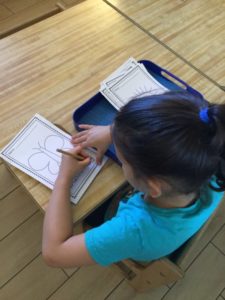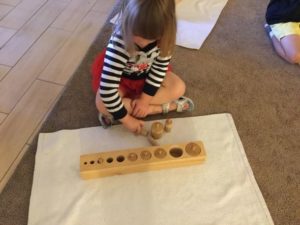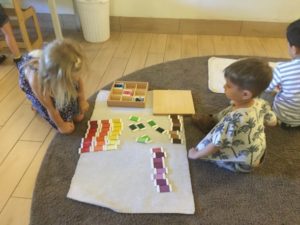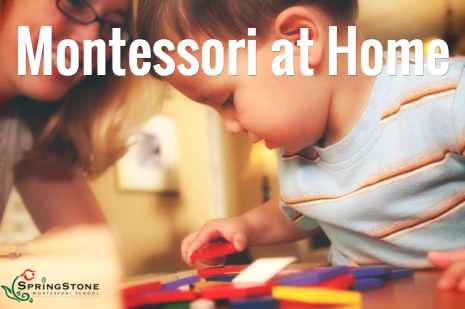The Montessori Difference – Our Key to Success


The structure of a Montessori school day is clearly different from a more traditional school. Apart from the classroom schedule, what fundamental characteristics make Montessori schools unique?
Individual Pacing
The most noticeable difference between a traditional school and a Montessori school is that students move at their own pace. Rather than participating in a teacher-led instruction or activity, each student works on lessons that are precisely fit to their current ability level. Teacher-led instruction is where all students perform the same tasks to meet the same academic goal each day.
Montessori students choose which lessons to do when. Students do them in whatever order they like, and for as long as they like. For example, if a student is really absorbed in a math lesson, she can spend three hours on it in order to master the skill. If a student or a group of students show a particular interest in a topic, i.e. learning more details about the animals of the continent of Europe, the Montessori teacher will work to tailor the activities to incorporate more of that topic while still meeting the curricular goals.
Mixed Age Groups
Maria Montessori believed that mixed age groups were of great benefit to students. The role-modeling and collaboration possible in this kind of blend could enhance not just learning, but social and emotional development as well. Students from ages three to five all work in the same space.
The older students often naturally take on leadership roles. They help set the tone for a working environment. Younger students also find ways to lead, whether through their growing knowledge in a particular subject area, a special talent, or with their own unique set of social skills.

Mixing age groups also allows for more differentiation. If students are not separated by age, they can more easily be paired based on readiness or interest. When a Montessori teacher needs a student to demonstrate a skill for another student, she is not limited to only children in that student’s age group. She can choose the best student for the job, regardless of their age.
Flexibility
While a Montessori school maintains a regular schedule of daily activities, it also allows for changes to accommodate special events. Visitors and parent volunteers are welcome to present and participate in activities. The ability to take advantage of opportunities as they arise, to provide more and varied experiences to the students, are a big part of what Montessori education is all about. This flexibility is more important than being held too closely to a set schedule.
Focus on the Whole Child
Although students do academic work every day, the Montessori curriculum focuses on developing the “whole child.” This allows the child to develop emotionally, physically, socially, and academically. When people look at an academic program, they specifically look at academics. However, in the Montessori world, we believe in the philosophy that academics are insufficient to the whole child. Montessori education is about much more than academics. It is independence. It is the capacity for concentration. It is the capacity for sharing space. It is respect for the community.
This philosophy is apparent in the way students are treated. If a child is getting distracted or is having trouble focusing, we do not reprimand him. Instead, we try to re-ignite his interest, determine what is confusing him, or help him find another task that is more appealing. Students are also given plenty of responsibility for maintaining the classroom, planning meals and snacks, and working through problems as they come up. All of these are not seen as distractions from the curriculum, but important parts of the curriculum itself.
In a Montessori environment,
where the curriculum emphasizes respect for everyone’s learning,
concentration, and space,
students are given room to initiate their own projects.

